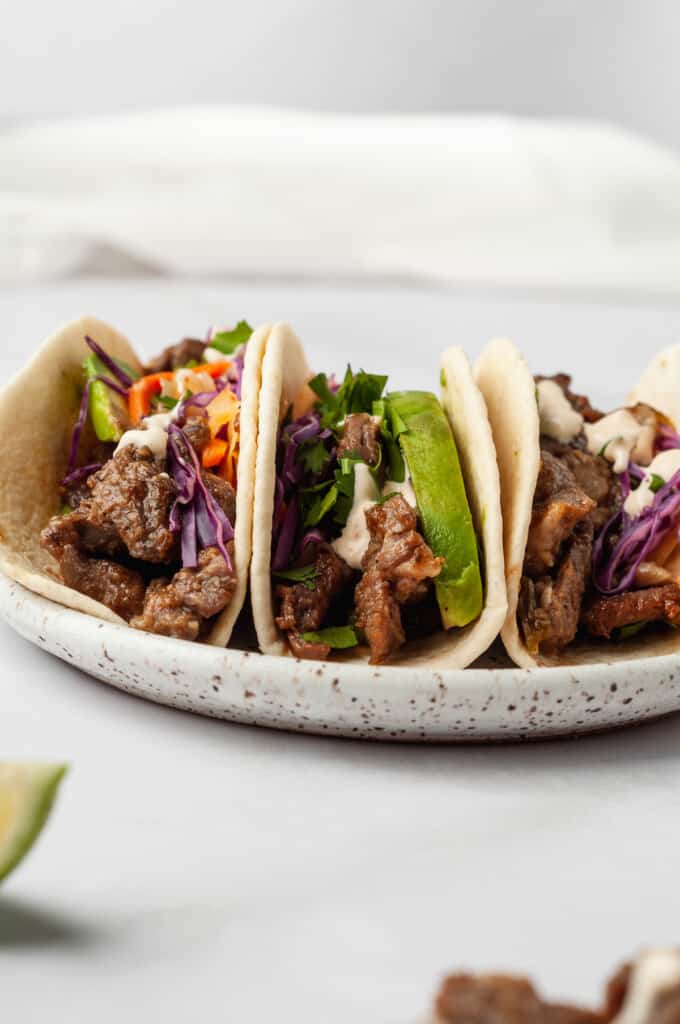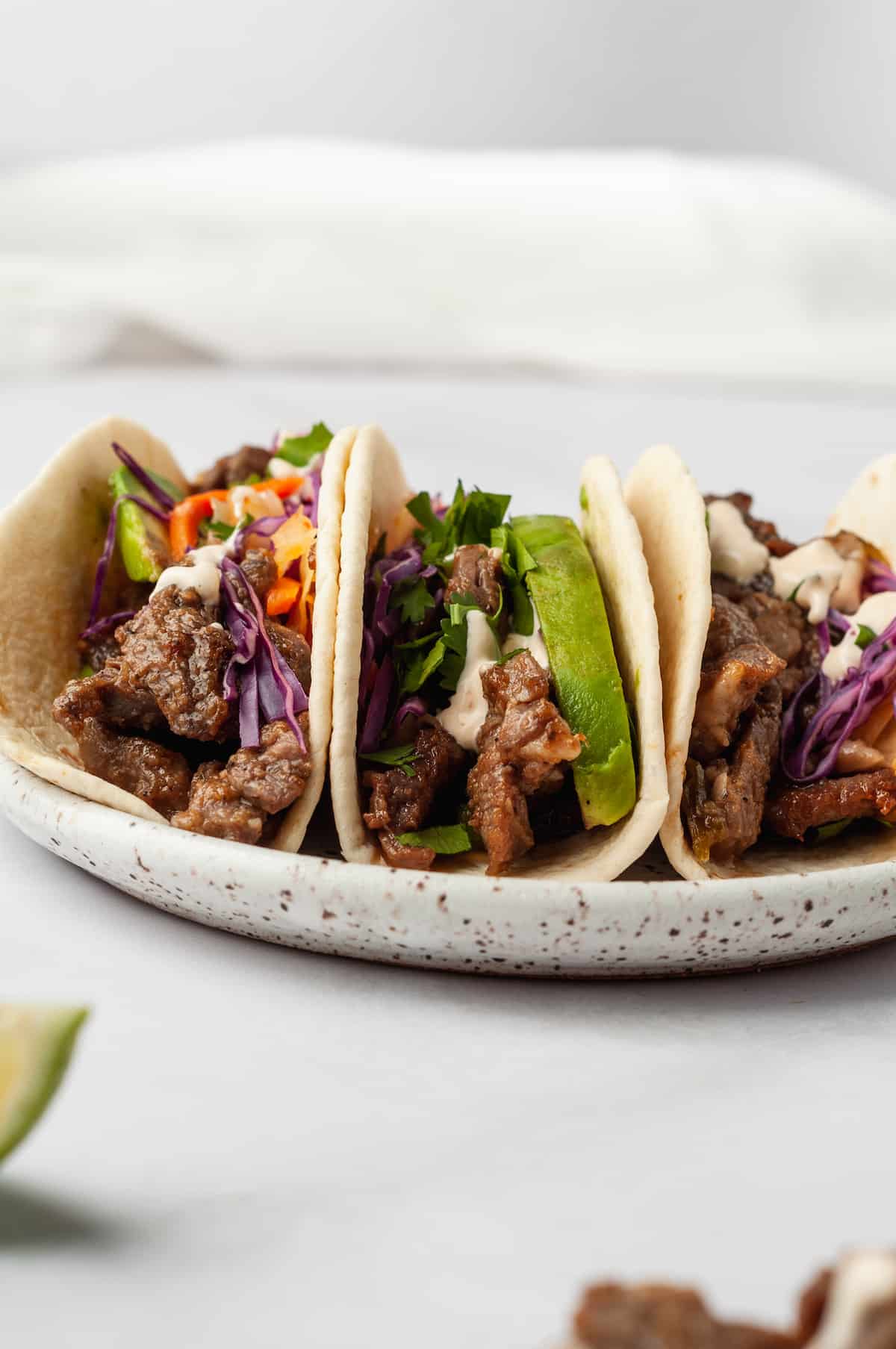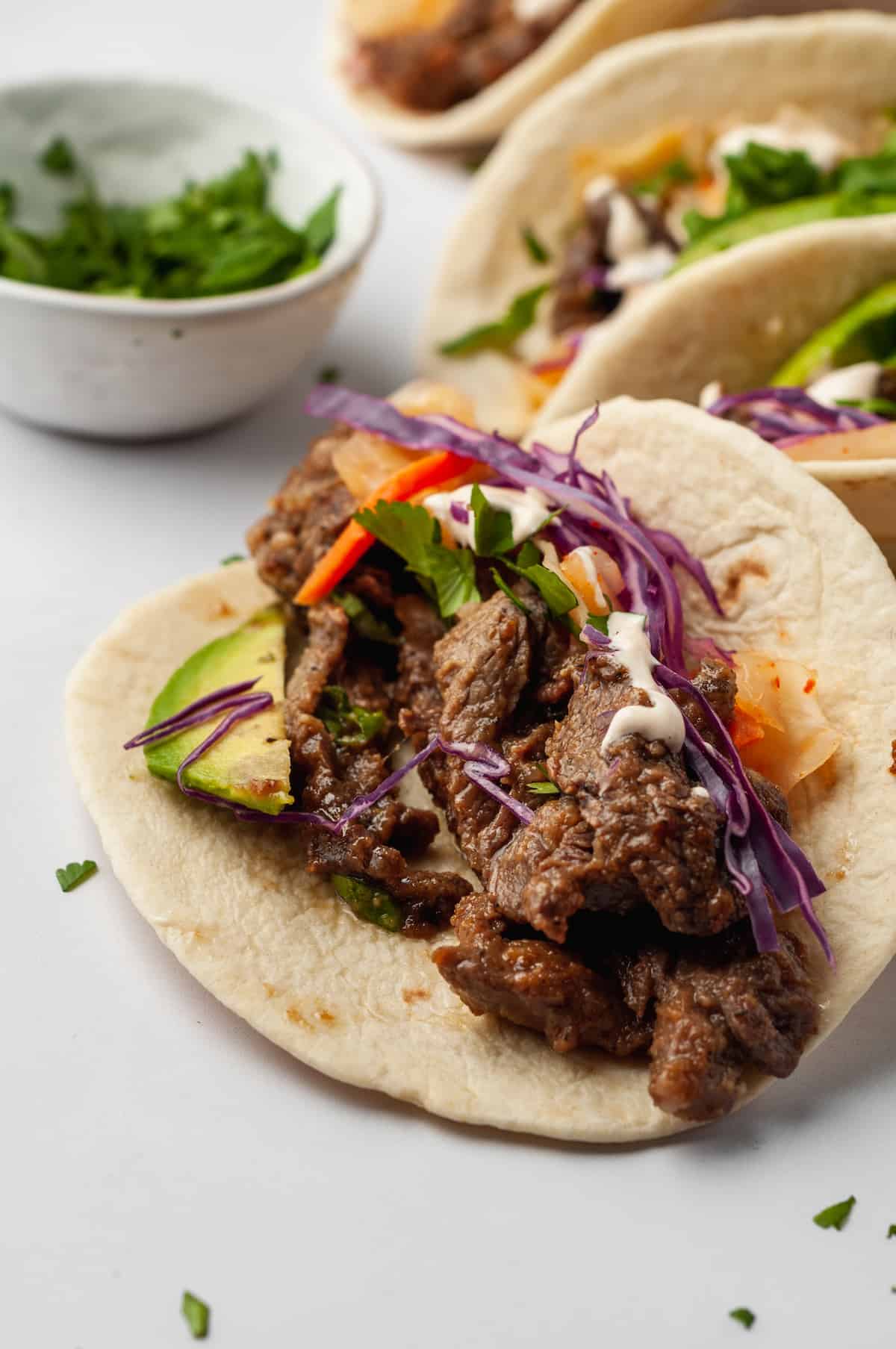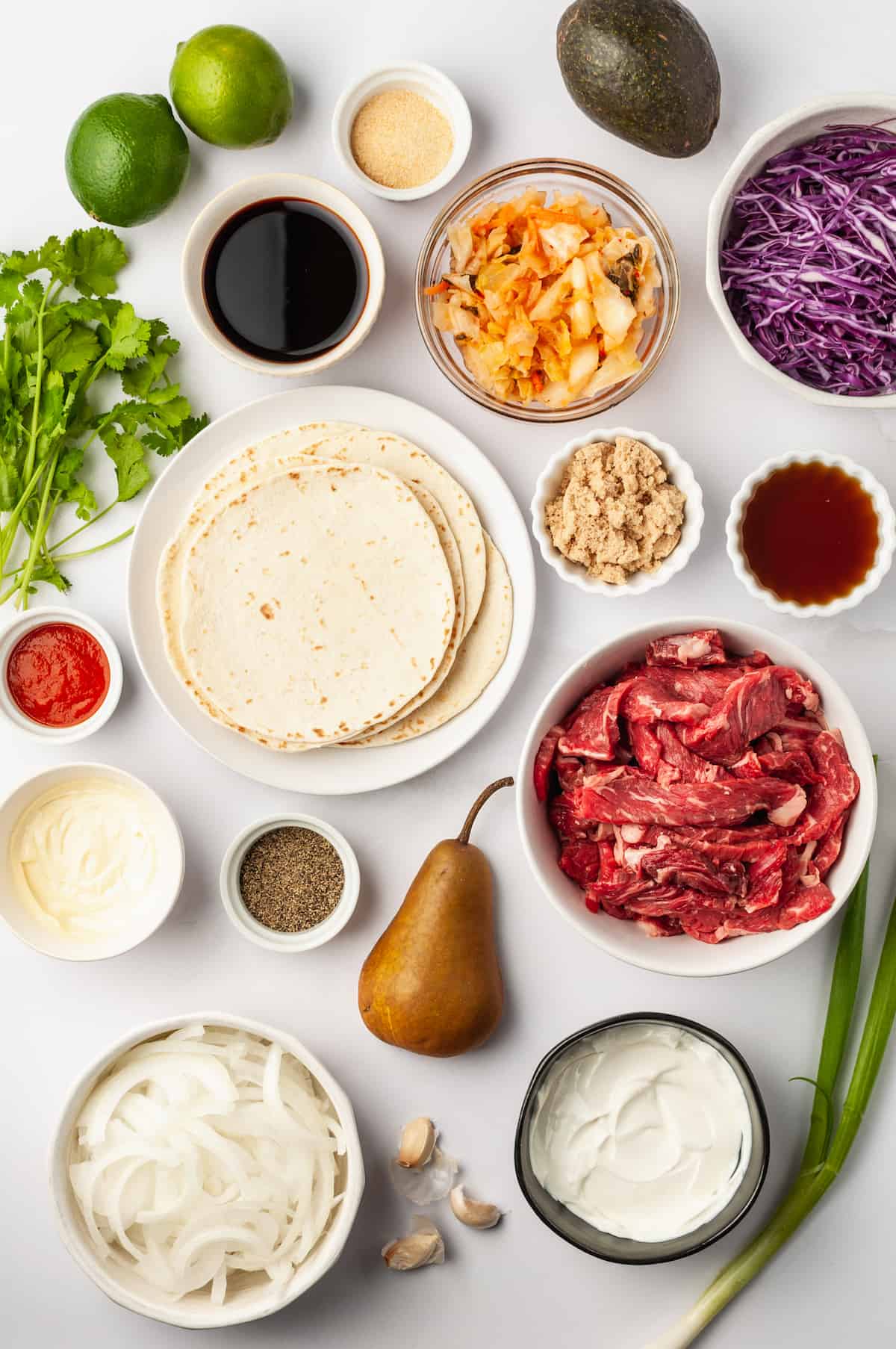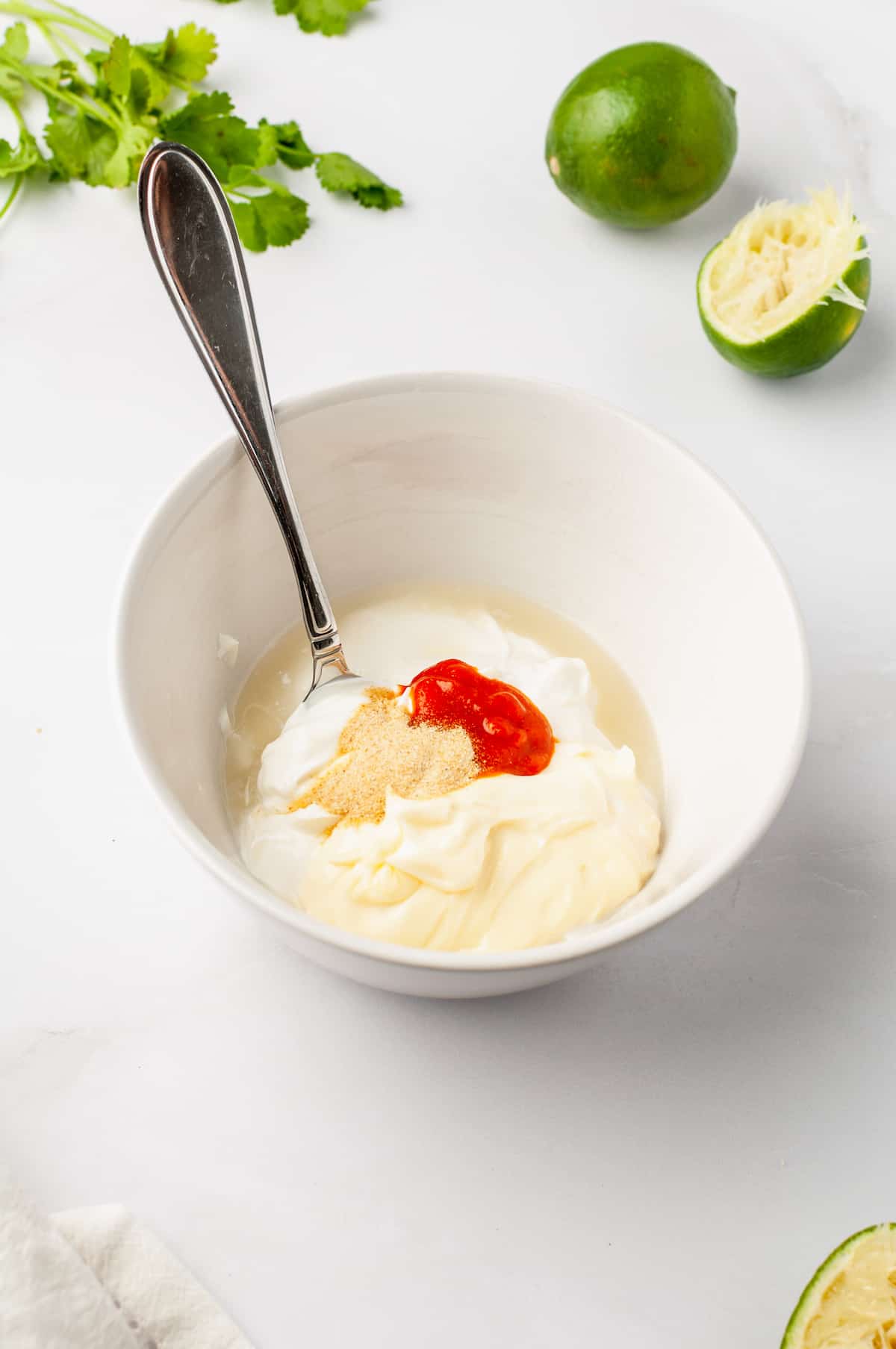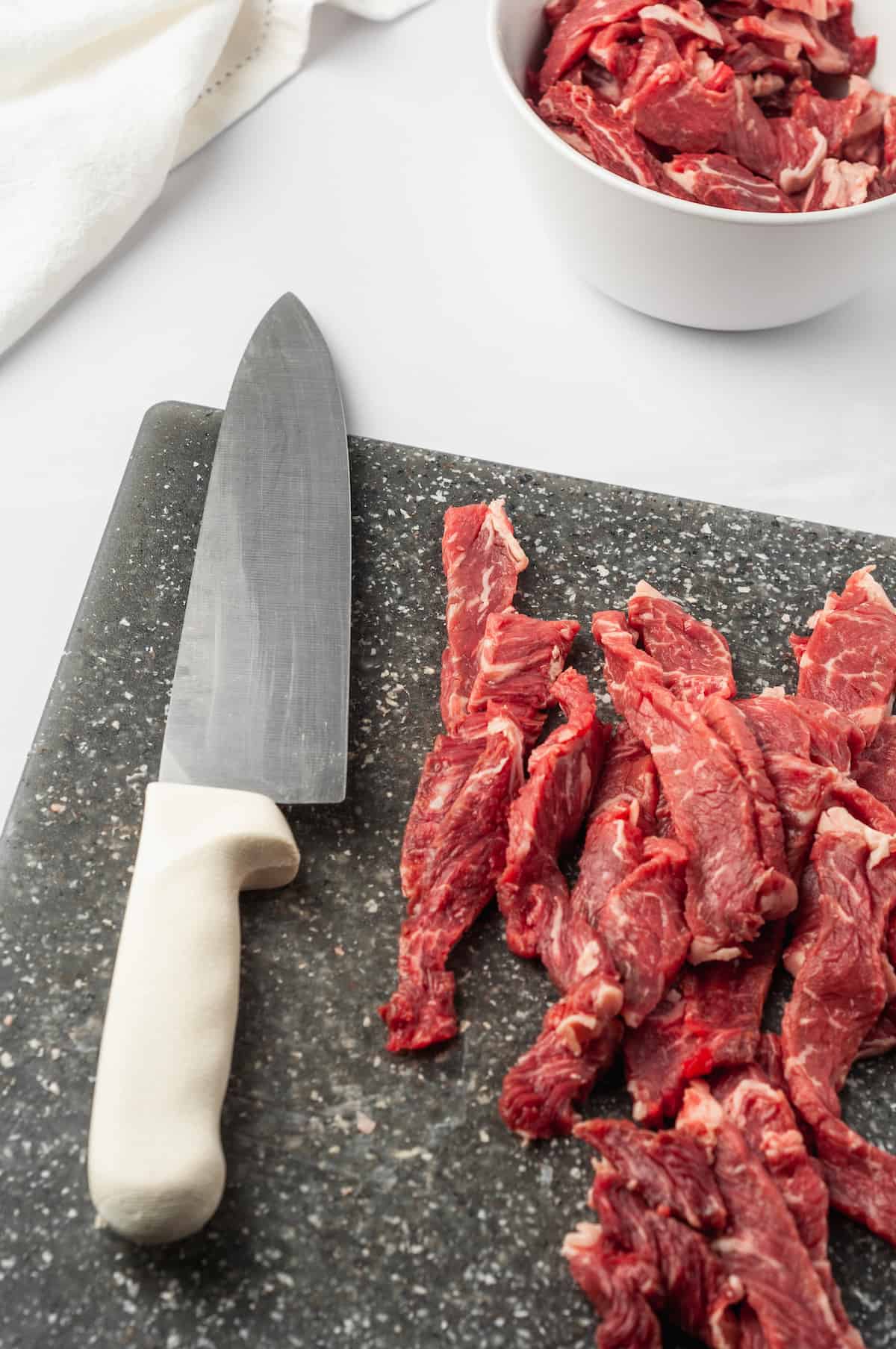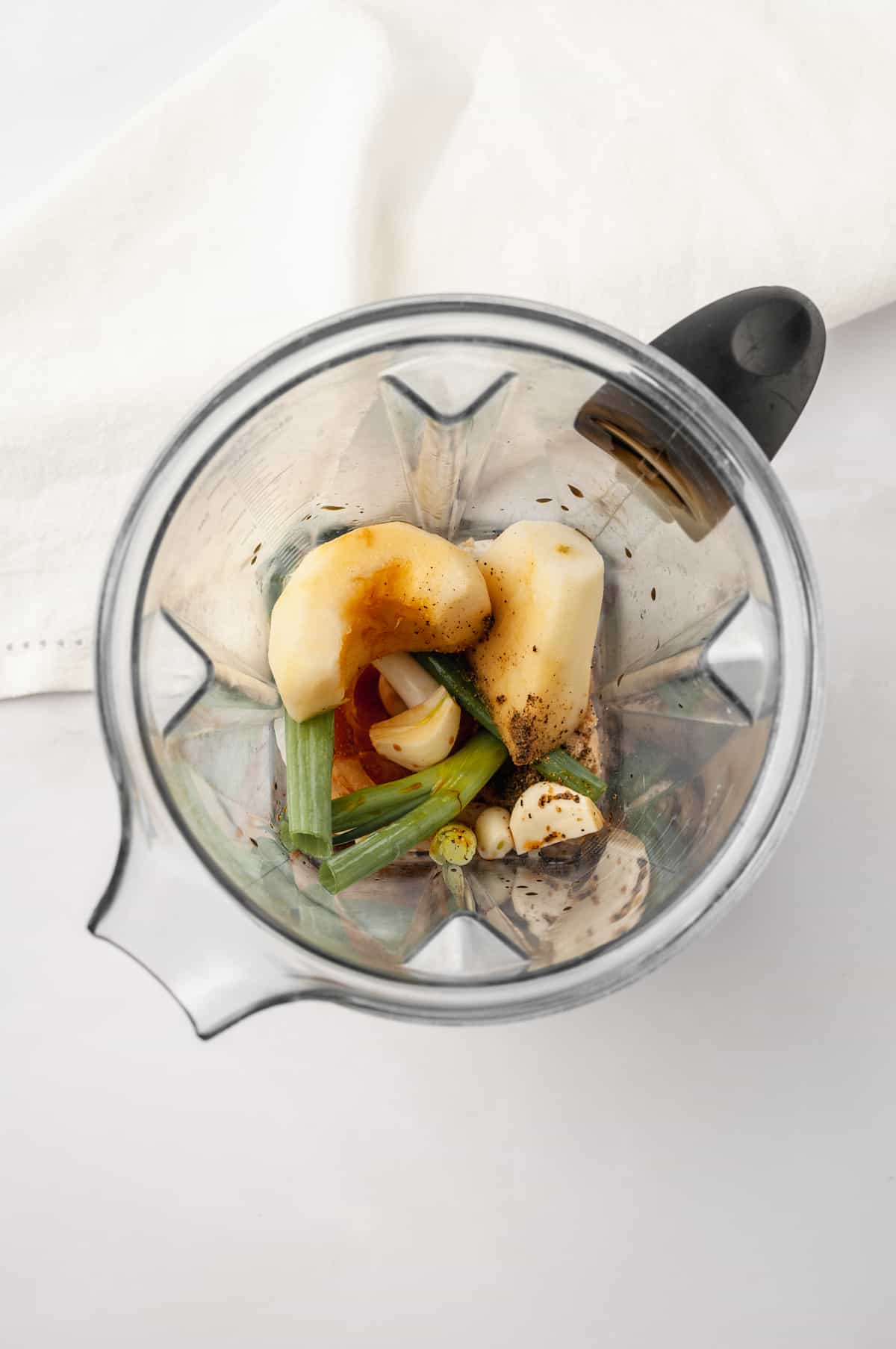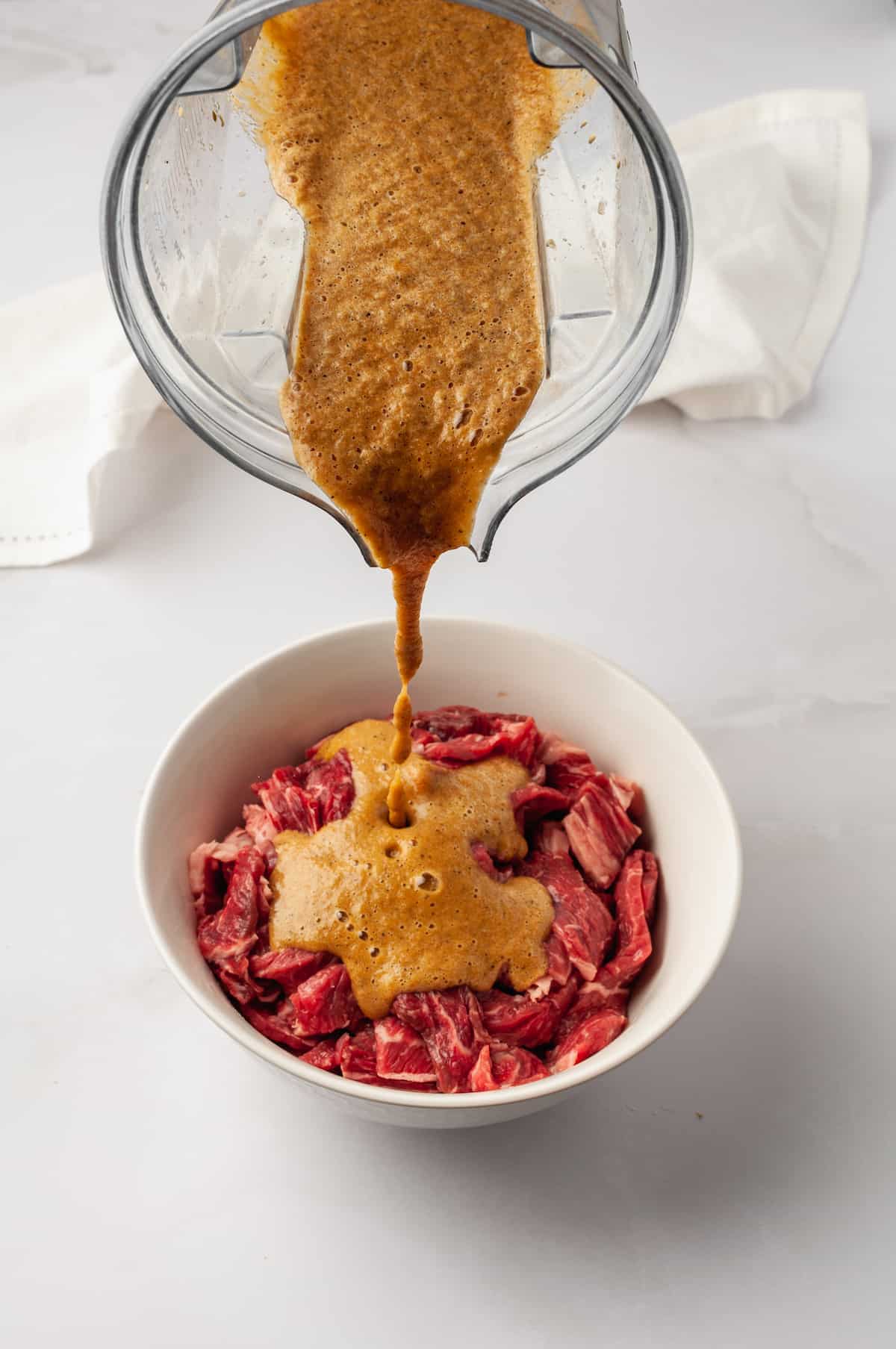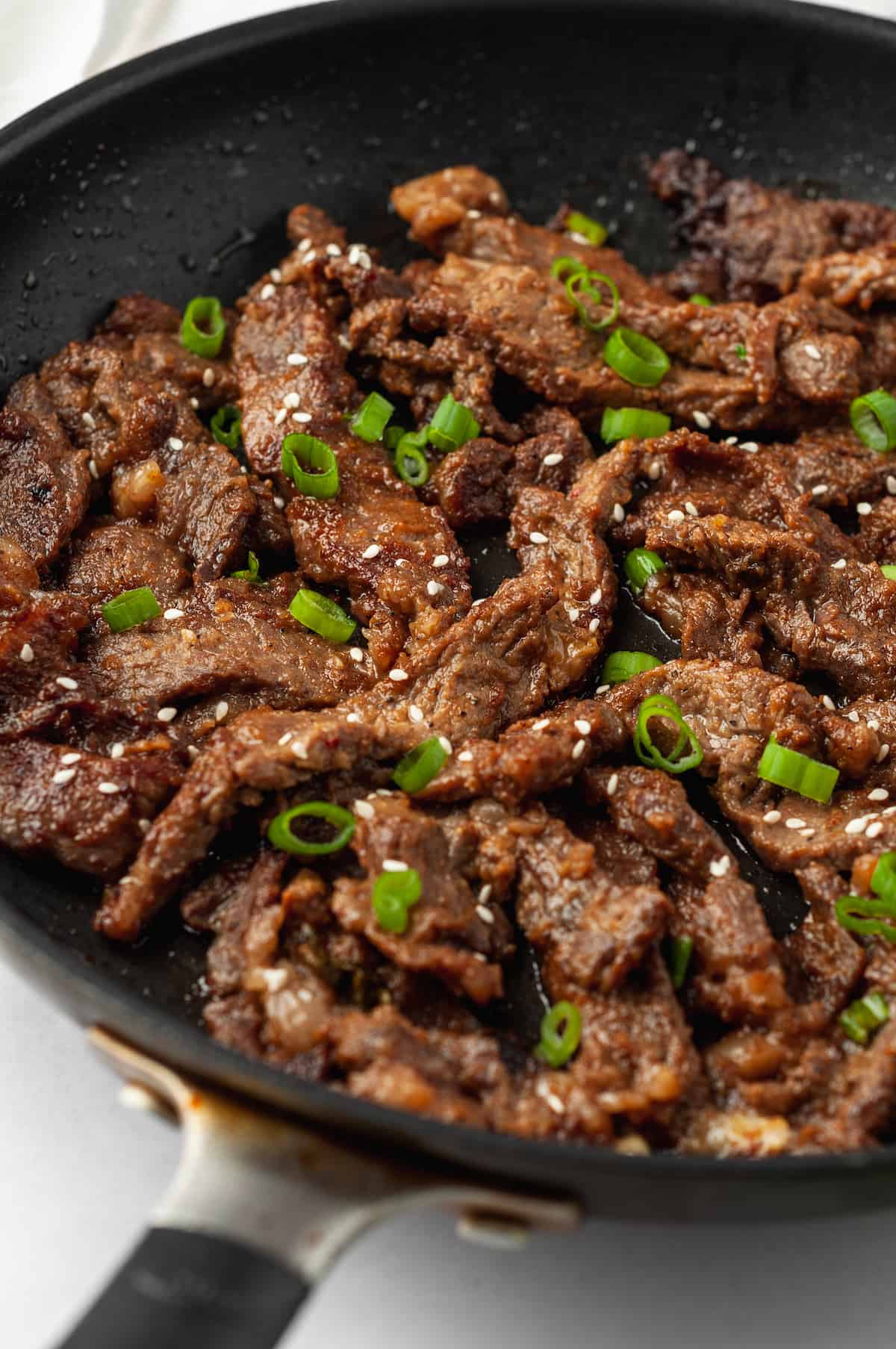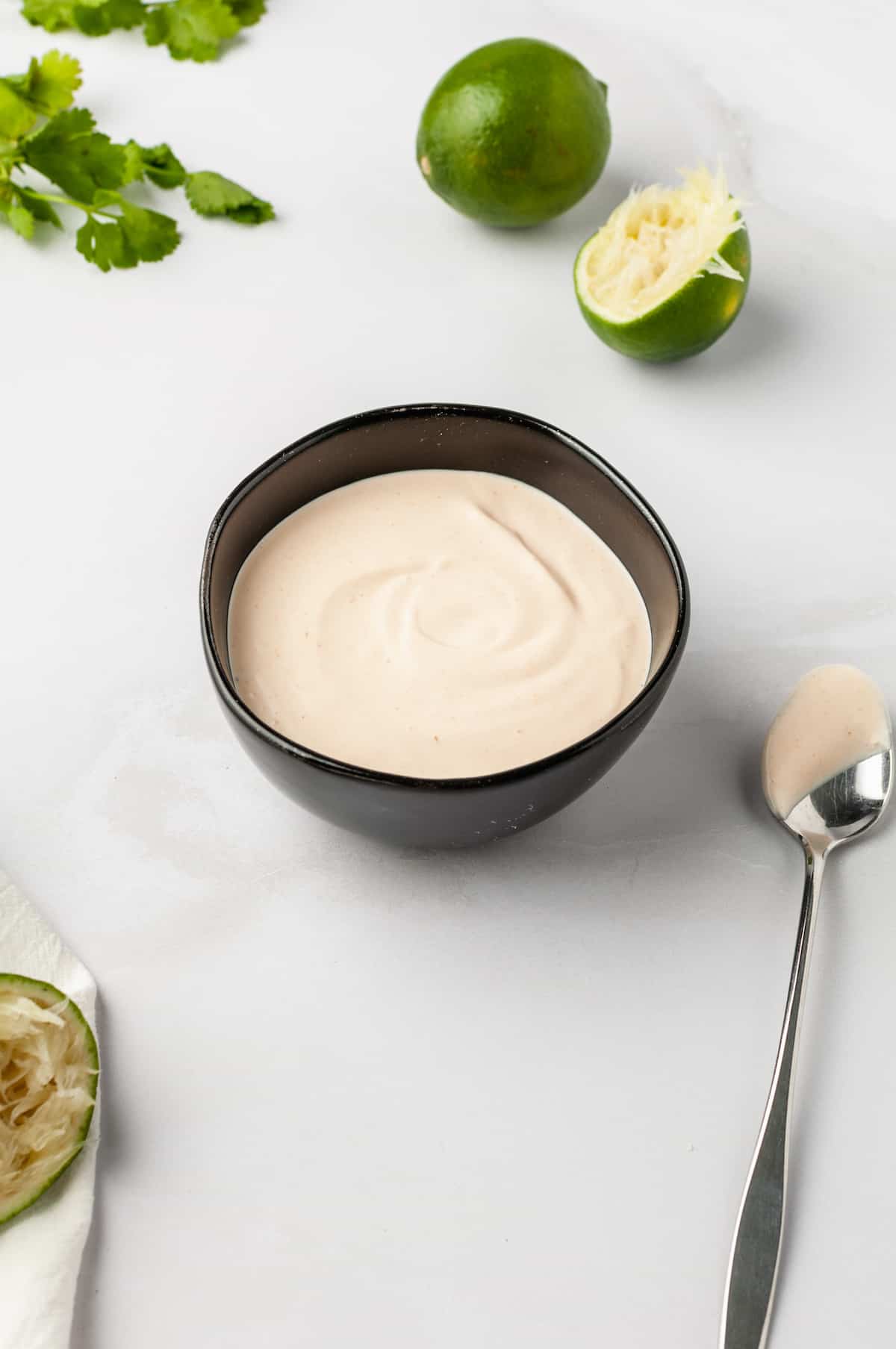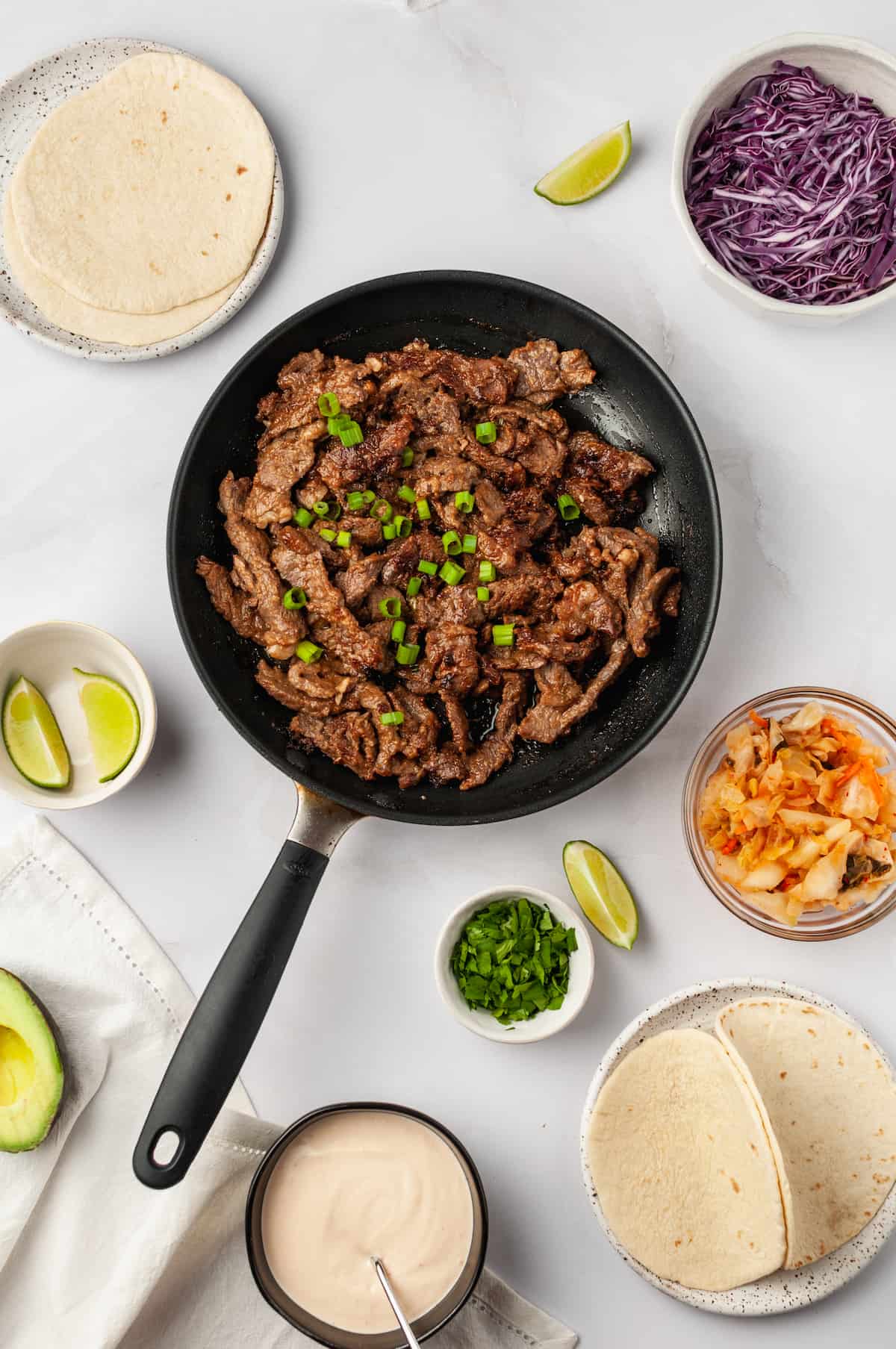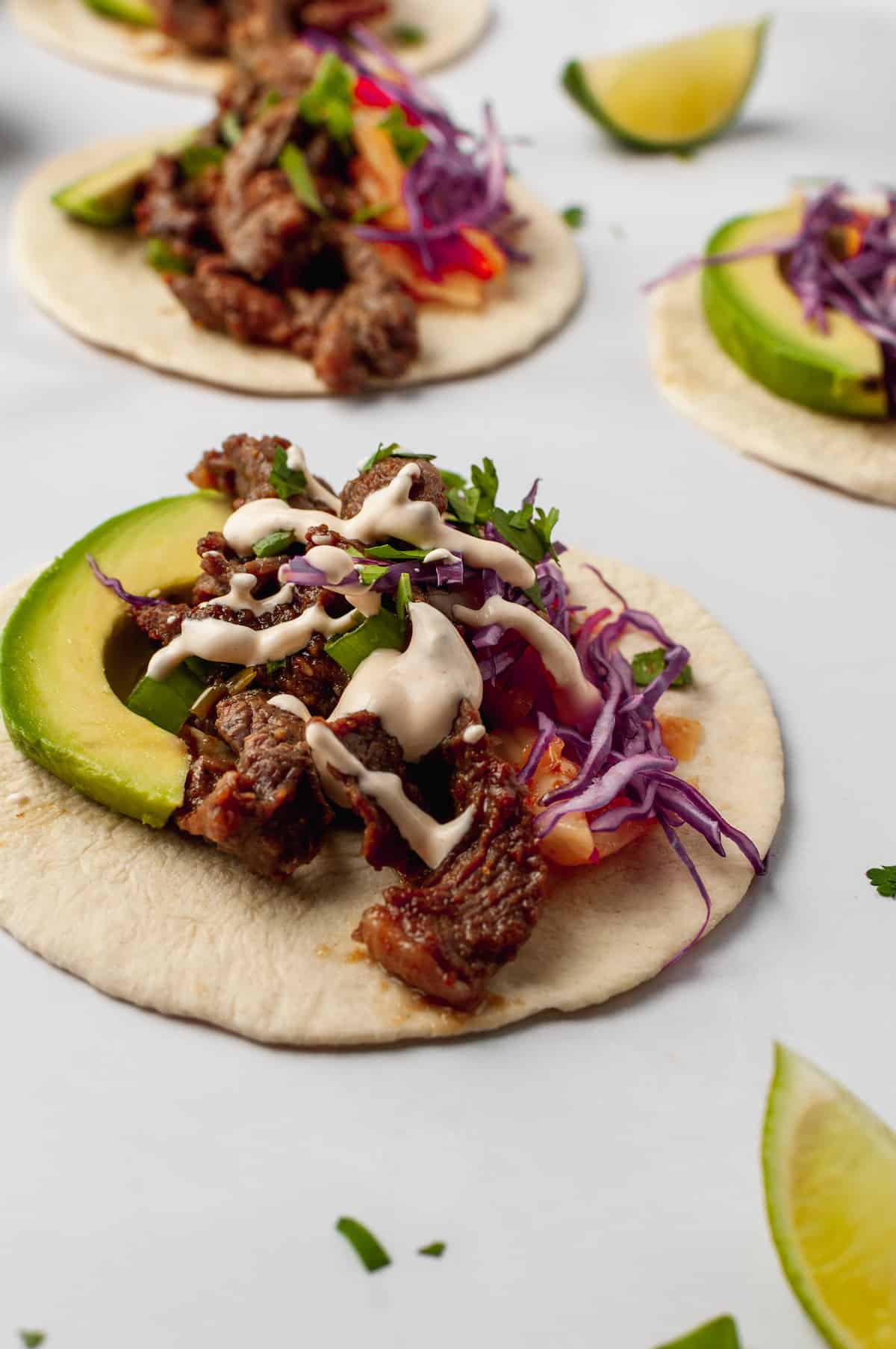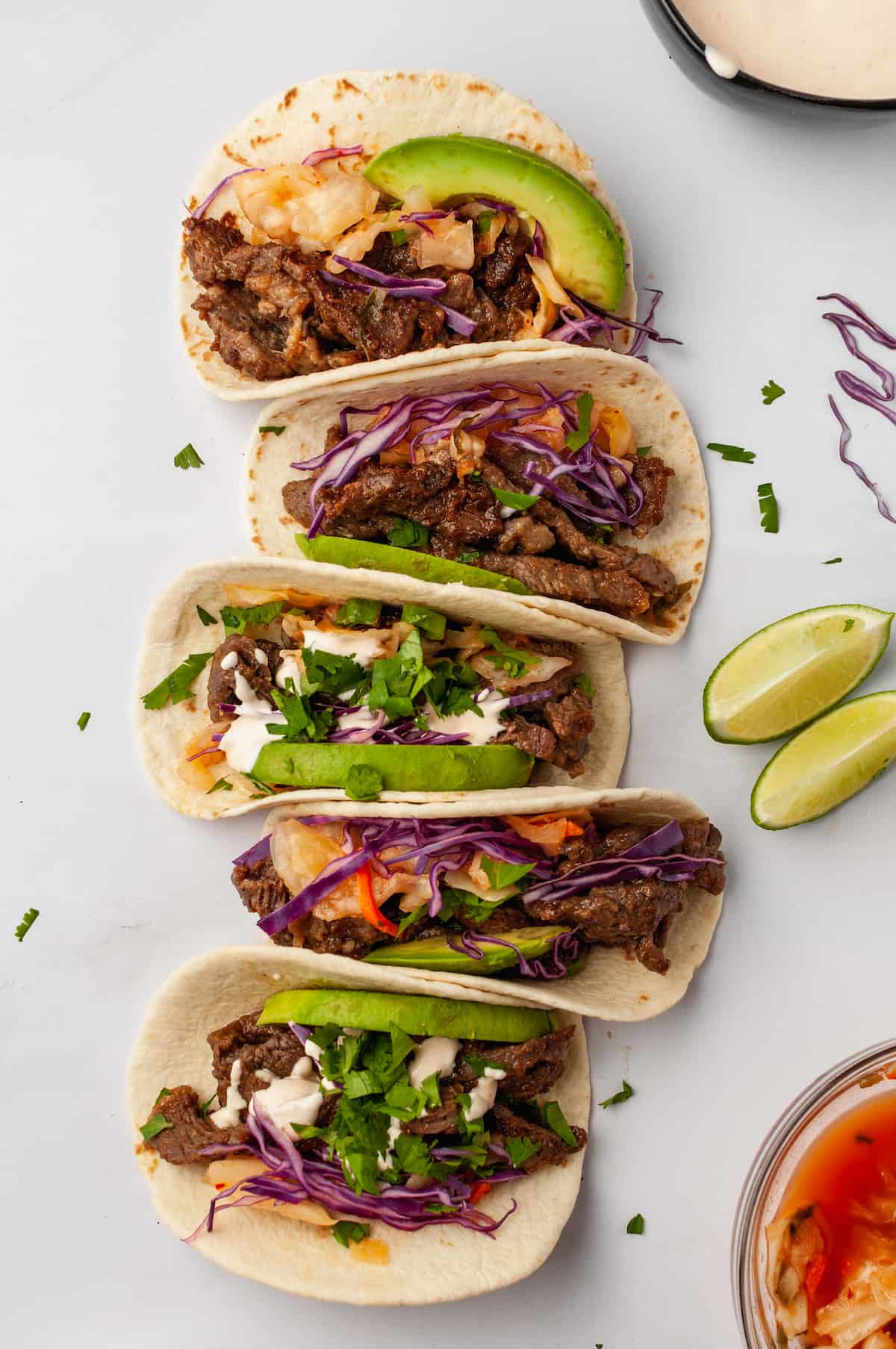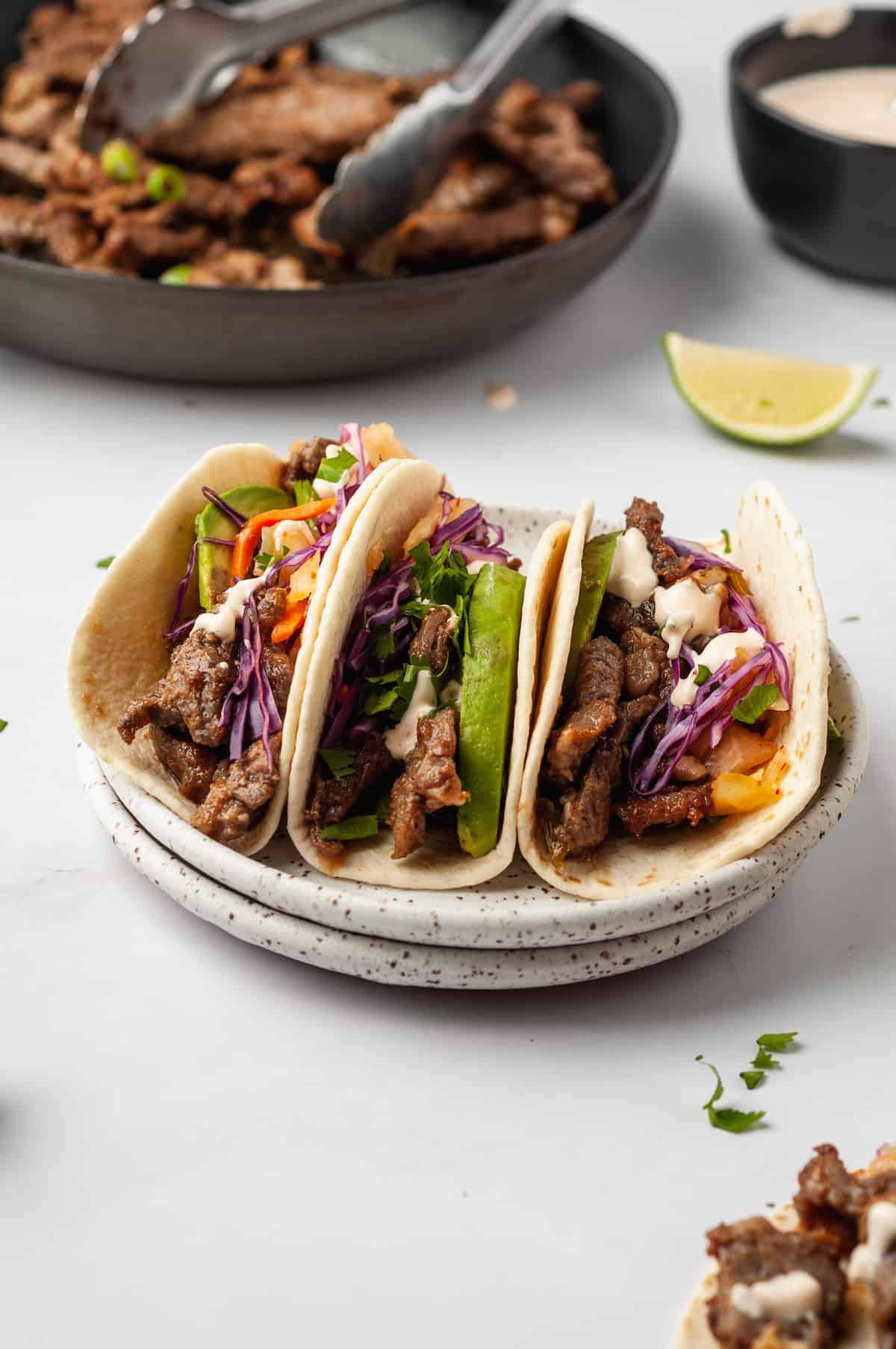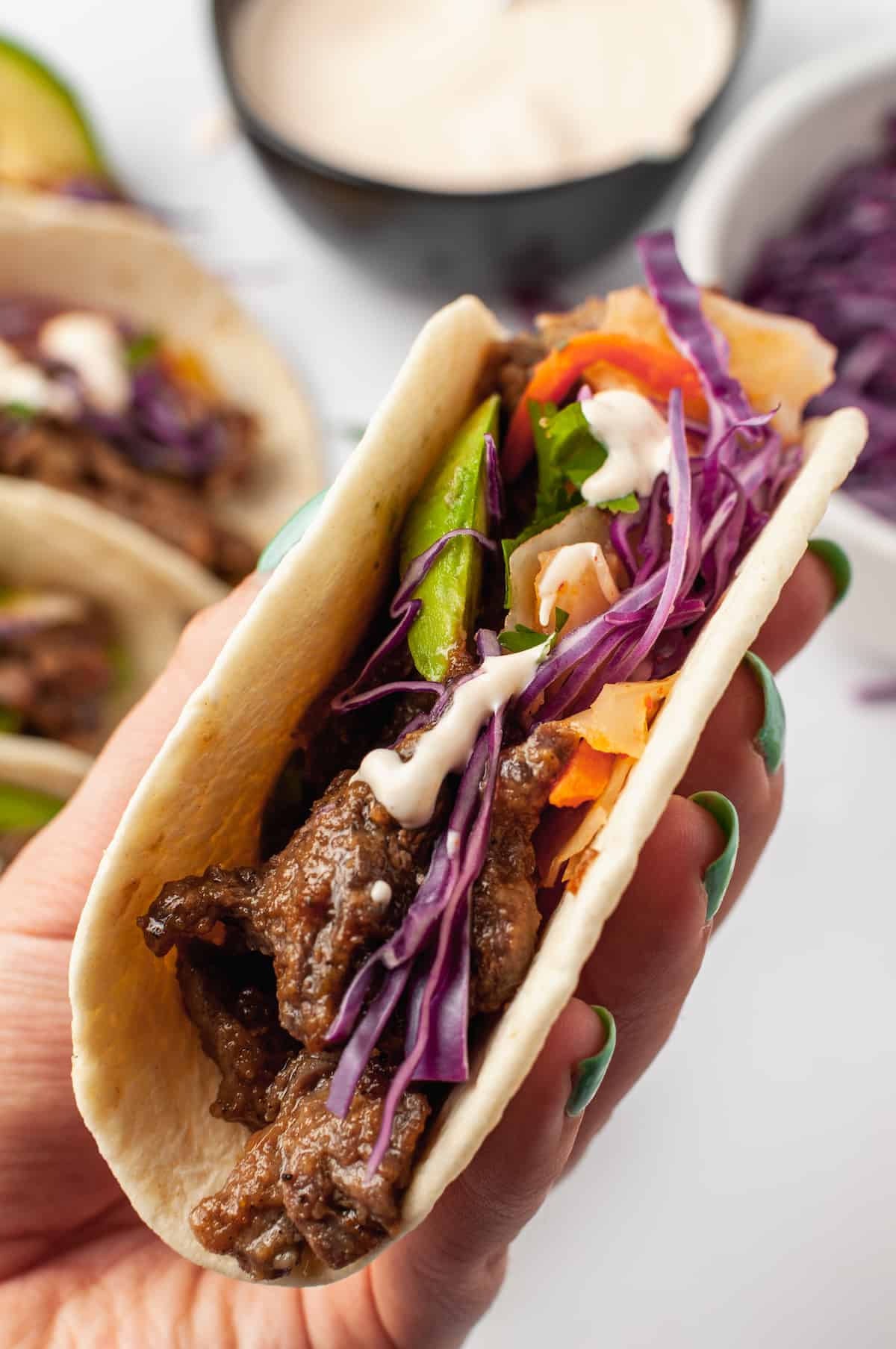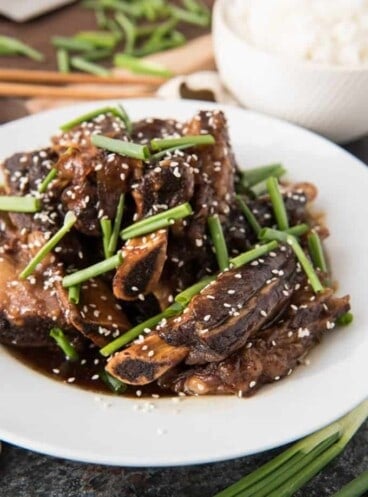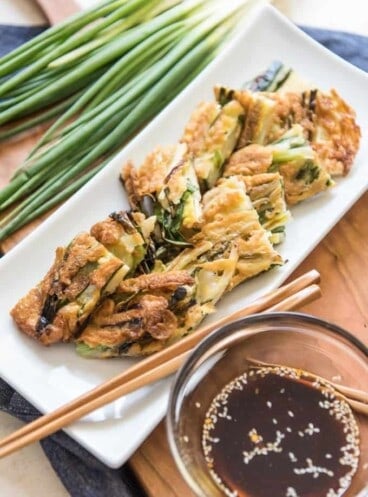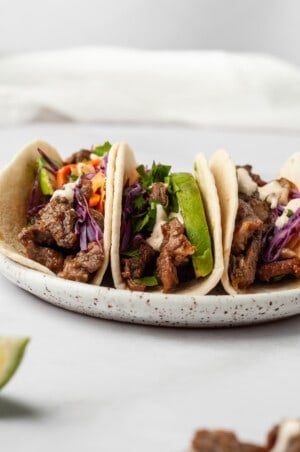If you’re looking to spice up your Taco Tuesday routine, these Korean beef tacos are the perfect way to do just that. Bulgogi beef and kimchi bring bold Korean flavors, while soft flour tortillas, avocado, cilantro, and lime are practically shouting Mexican street tacos. And the whole thing is tied together by their connection to the American food truck scene, where Korean beef tacos are hugely popular! While I’m not claiming any authenticity with this Korean beef taco recipe, I did research traditional flavors for making the bulgogi beef (including using an Asian pear in the marinade to help tenderize the meat) and did my best to accurately represent the flavors that should be present in the meat component of this Asian-fusion meal. (Looking for more Taco Tuesday ideas? Some of our other favorite taco recipes are Smoky Chicken Tinga Tacos, Baja Fish Tacos Recipe, and Navajo Tacos!)
What Does Bulgogi Taste Like?
If you’ve never had bulgogi before, it’s incredibly tender, with the perfect balance of salty, sweet, and savory flavors. On its own, bulgogi is not spicy, although if you want to add an extra kick, you can whisk some gochujang into the marinade.
What You’ll Need
Scroll down to the recipe card below this post for ingredient quantities and full instructions.
Bulgogi Beef:
Ribeye or sirloin steak – Thinly sliced beef is key! Onion – A standard yellow onion is just fine for this recipe.GarlicAsian or Bosc pear – Asian pears are best, but they’re not always easy to find out-of-season unless you’re shopping at an Asian market, so you can substitute a Bosc pear if needed.Green onionBrown sugar – Dark or light will both work; dark brown sugar will give you a deeper, more molasses-y flavor.PepperSoy sauceSesame oil
Korean Beef Taco Fixings:
Flour tortillas – If you prefer corn tortillas, those certainly work too!Kimchi – Kimchi plays up the Korean flavors in these tacos, but if it’s not your thing, you can leave it out.Purple cabbageCilantroAvocadoLime wedges
Taco Sauce:
Sour cream – Greek yogurt or Mexican crema can be used instead.MayonnaiseFresh lime juiceGarlic powderGochujang paste or Sriracha sauce
Is Gochujang Paste Really Spicy?
Yes! Although the level of heat does depend on the brand you buy. Gochujang is a fermented chili paste that’s loaded with umami flavor, so it’s quite different from sriracha, which is milder, with more prominent vinegar and garlic flavors. If you’re using gochujang paste for the first time, start with a small amount, taste, and add more a little at a time.
How to Make Korean Beef Tacos
The longer you let the beef marinate, the better. You’ll need to let it marinate for at least 30 minutes, but you can let it marinate in the fridge overnight. Cut the beef. Thinly slice the ribeye steak and place it in a large bowl. Make the marinade. Combine half of the onion with the garlic, pear, green onion, brown sugar, pepper, and soy sauce in a blender. Blend until smooth, then pour the marinade over the beef and toss to coat. Marinate the beef. Cover the bowl with plastic wrap and place it in the refrigerator for at least 30 minutes. Cook the bulgogi. Heat the sesame oil in a large cast iron skillet or pan set over medium-high heat. When the oil is hot, add the meat and marinade. Cook, stirring frequently, until the steak is cooked through and the sauce is caramelized. Garnish with green onions and sesame seeds before assembling the Korean beef tacos, if desired. Make the taco sauce. Whisk together all of the ingredients in a bowl until smooth. Assemble. Divide the bulgogi beef onto warm tortillas, then top with the kimchi, purple cabbage, cilantro, and avocado. Drizzle with taco sauce and serve with lime wedges on the side.
Tips for Success
Here are my best hints and tips for perfect Korean beef tacos:
Freeze the beef. The easiest way to get super-thin slices of steak for bulgogi is to pop the beef in the freezer for an hour or two. You don’t want it all the way frozen, but just frozen enough that it holds its shape well when you slice it.Cut against the grain. This keeps the beef from being tough and chewy.Make sure the skillet is very hot. This sears the outside of the beef as soon as you add it to the pan, which keeps it tender and juicy.
How to Store and Reheat Leftovers
Keep the components for these Korean beef tacos separate in the refrigerator. The bulgogi and the taco sauce will keep in the fridge for 3 or 4 days; give the sauce a good stir before you use it. The best way to reheat bulgogi is in a skillet set over high heat. The next best option is in a 500ºF oven—just spread the beef out on a sheet pan and it should be warmed through in a few minutes.
Can This Recipe Be Frozen?
You can freeze cooked bulgogi for up to 2 months. Let it thaw in the refrigerator, then warm it up according to the instructions above before assembling your Korean beef tacos.
More Korean-Inspired Recipes You’ll Love
Hotteok (Korean Sweet Pancakes)Oven Baked Korean BBQ Chicken WingsSlow Cooker Korean Beef Short Ribs (Kalbi)
This post was originally published in February 21, 2018. The photos and content were updated in August, 2022.
Korean Short Ribs Recipe
Korean Hotteok (Sweet Korean Pancake Recipe)
Korean Pancakes with Scallions (Pajeon or Pa Jun)
Let me know what you thought with a comment and rating below. You can also take a picture and tag me on Instagram @houseofnasheats or share it on the Pinterest pin so I can see.
